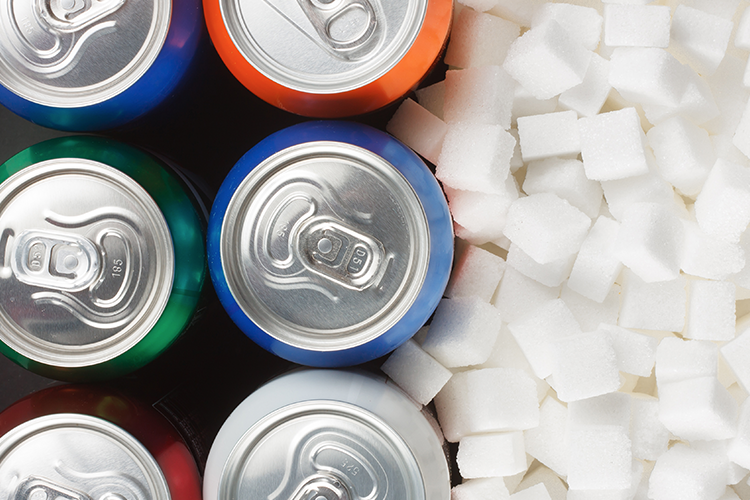Blog
WHO recommends taxing sugary drinks
Jamie Oliver wants it. Mexico has got it. And now the World Health Organization is advocating for it. Placing a tax on sugary drinks may become commonplace.
The idea has been floating around Australian politics, with proposals for a 20% sugar tax on beverages with more than 5g of sugar per 100ml.
Nutritionally, we don’t need added, or free, sugars in our diet. We get enough sugars that occur in foods naturally.
WHO believe we should wind back on free sugar consumption, and released guidelines in 2015 recommending we limit intake to 6 teaspoons per day for health benefits. That is 25 grams, which looks like 250ml of apple juice, 2.5 tablespoons of Milo, or just under one small serving of Pad Thai.
An aim like this ties into several WHO initiatives – Global Action Plan on the Prevention and Control of NCDs 2013–2020; the Comprehensive Implementation Plan on Maternal, Infant and Young Child Nutrition; and WHO Commission on Ending Childhood Obesity.1-3
And economic incentives, like a sugar tax, they also believe can help curb the amount of added sugar being consumed, and the rise in diet-related conditions.
Taxing sugary drinks
The Fiscal Policies for Diet and the Prevention of Noncommunicable Diseases report recently released by WHO shares findings of 11 meta-analyses aimed that have analysed the effectiveness at preventing non-communicable disease (NCD) onset through fiscal policy interventions.4
It found reasonable evidence that increasing costs of sugar-sweetened beverages by 20% provides enough deterrence to reduce consumption. And strong evidence that reducing the cost of vegetables and fruit by 10-30% can increase intake of the healthy, fresh produce. 4
By having less detrimental stuff, and more nourishing stuff, we would helping our body’s live better for longer.
It is suggested that the price hike on foodstuff like soft drink could be in the form of a tax. In theory, governments could use this money for vegetables and fruit subsidies, put it back into the healthcare system, and fund educational strategies promoting healthy eating and use of food as preventative medicine.
Such moves could also act as a catalyst for hospitals and schools to remove sale of sugary drinks.5
But why, WHO?
Why is the World Health Organization warring on sugar?
“Consumption of free sugars, including products like sugary drinks, is a major factor in the global increase of people suffering from obesity and diabetes,” says Dr Douglas Bettcher, Director of WHO’s Department for the Prevention of NCDs. “If governments tax products like sugary drinks, they can reduce suffering and save lives. They can also cut healthcare costs and increase revenues to invest in health services.”
Reducing excess consumption of added sugar and replacing with real, whole foods like vegetables and fruit can support health, quality of life, and ultimately reduce the increasing burden on the health care system to treat chronic health conditions associated with poor diet.
Increased risk for such conditions include tooth decay, type 2 diabetes, cardiovascular disease, and even cancer.
The call for action comes as WHO reports obesity rates have doubled, and the number of people living with diabetes (a majority of which will be type 2) nearly quadrupled globally between 1980 and 2014.6
Of course food industry raises doubt that sweetened beverages should be singled out as a purveyor of chronic disease and that introducing taxes would make people think twice about their sugary drink purchases.
But when reports highlight consistent lobbying by Coca-Cola and Pepsi Co against public health campaigns aimed at reducing soft drink consumption or improving nutrition in the U.S.,7 and when funding in Australia by Coca-Cola for healthcare bodies and professionals is revealed, is it industry we want to be listening to?
A step in the right direction
A tax on sugar-sweetened beverages isn’t the sole answer to reducing added sugar consumption and curb the rise in diet and lifestyle-related conditions such as type 2 diabetes and cardiovascular disease. But it can be an effective tool in the preventive healthcare tool shed.
Whilst everyone person is different, and there is no one-size-fits-all approach to diets, eating mostly real, whole foods will benefit most. And perhaps hitting the everyday person where it matters – the back pocket – may be the kick-start incentive to limit the highly processed packaged and sugar-laden stuff, and replace with fresh veg ‘n’ fruit and other whole food stuff.
By Angela Johnson (BHSc Nut. Med.)
References:
- WHO 2013, ‘Global action plan for the prevention and control of noncommunicable diseases 2013-2020’, World Health Organization, viewed 25 October 2016, <http://www.who.int/nmh/events/ncd_action_plan/en/>.
- WHO 2014, ‘Maternal, infant and young child nutrition’, World Health Organization, viewed 25 October 2016, <http://www.who.int/nutrition/publications/CIP_document/en/>.
- WHO 2016a, ‘Report of the Commission on Ending Childhood Obesity’, World Health Organization, viewed 25 October 2016, <http://www.who.int/end-childhood-obesity/final-report/en/>.
- WHO 2015, ‘Fiscal policies for diet and prevention of noncommunicable diseases: technical meeting report’, World Health Organization, Geneva, Switzerland, viewed 25 October 2016, <http://www.who.int/dietphysicalactivity/publications/fiscal-policies-diet-prevention/en/>.
- The Lancet 2016, ‘Editorial: WHO’s war on sugar’, The Lancet, vol. 388, p. 1956.
- WHO 2016b, WHO urges global action to curtail consumption and health impacts of sugary drinks, media release, 11 October, World Health Organization, viewed 25 October 2016, <http://www.who.int/mediacentre/news/releases/2016/curtail-sugary-drinks/en/>.
- Aaron, DG, & Siegel, MB 2016, ‘Research Article: Sponsorship of National Health Organizations by Two Major Soda Companies’, American Journal of Preventive Medicine, [Epub].












